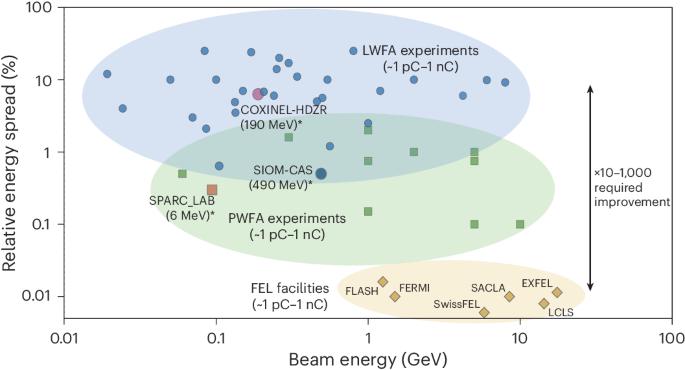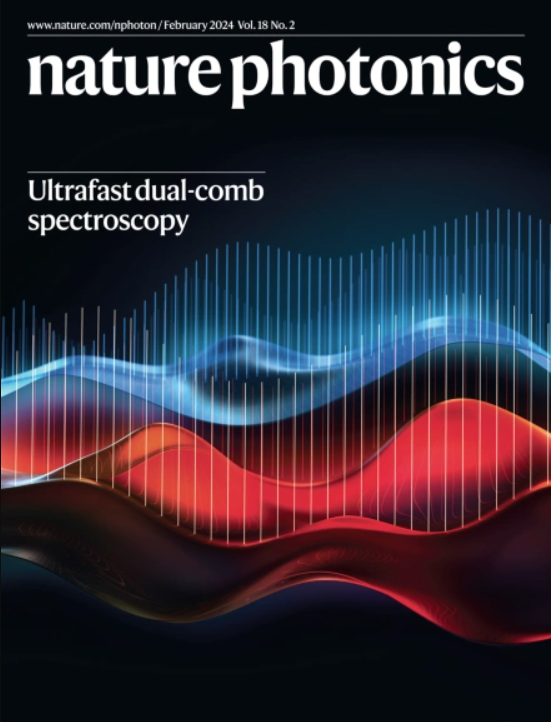由等离子唤醒加速束驱动的自由电子激光器的前景
IF 32.3
1区 物理与天体物理
Q1 OPTICS
引用次数: 0
摘要
基于等离子唤醒场的加速技术有可能彻底改变粒子加速器领域。通过提供比传统射频粒子加速器大几个数量级的加速梯度,该技术可将加速器的长度缩减到厘米级。它还为驱动自由电子激光器提供了一种新的紧凑型方法,而自由电子激光器是红外至 X 射线光谱范围内高亮度超短相干辐射的重要来源,可用于研究亚原子物质、复杂系统的超快动力学和 X 射线非线性光学等应用。世界各地的一些实验室正在努力实现这些新光源,探索等离子体汪场驱动光束的不同配置、等离子体平台设计和运行机制。本综述介绍了等离子体加速器的工作原理,概述了自放大自发辐射和种子配置等离子体驱动自由电子激光器的最新实验里程碑,并重点介绍了该领域仍然存在的主要挑战。本文章由计算机程序翻译,如有差异,请以英文原文为准。


Prospects for free-electron lasers powered by plasma-wakefield-accelerated beams
Plasma-wakefield-based acceleration technology has the potential to revolutionize the field of particle accelerators. By providing acceleration gradients orders of magnitude larger than conventional radiofrequency particle accelerators, this technology allows accelerators to be reduced to the centimetre length scale. It also provides a new compact approach for driving free-electron lasers, a valuable source of high-brilliance ultrashort coherent radiation within the infrared to X-ray spectral range for the study of subatomic matter, ultrafast dynamics of complex systems and X-ray nonlinear optics, among other applications. Several laboratories around the world are working on the realization of these new light sources, exploring different configurations for the plasma wakefield driver beam, plasma stage design and operational regime. This Review describes the operating principles of plasma accelerators, an overview of recent experimental milestones for plasma-driven free-electron lasers in self-amplified spontaneous emission and seeded configurations, and highlights the remaining major challenges in the field. This Review examines the principles of operation and progress made in developing free-electron lasers that feature plasma-wakefield-acceleration technology.
求助全文
通过发布文献求助,成功后即可免费获取论文全文。
去求助
来源期刊

Nature Photonics
物理-光学
CiteScore
54.20
自引率
1.70%
发文量
158
审稿时长
12 months
期刊介绍:
Nature Photonics is a monthly journal dedicated to the scientific study and application of light, known as Photonics. It publishes top-quality, peer-reviewed research across all areas of light generation, manipulation, and detection.
The journal encompasses research into the fundamental properties of light and its interactions with matter, as well as the latest developments in optoelectronic devices and emerging photonics applications. Topics covered include lasers, LEDs, imaging, detectors, optoelectronic devices, quantum optics, biophotonics, optical data storage, spectroscopy, fiber optics, solar energy, displays, terahertz technology, nonlinear optics, plasmonics, nanophotonics, and X-rays.
In addition to research papers and review articles summarizing scientific findings in optoelectronics, Nature Photonics also features News and Views pieces and research highlights. It uniquely includes articles on the business aspects of the industry, such as technology commercialization and market analysis, offering a comprehensive perspective on the field.
 求助内容:
求助内容: 应助结果提醒方式:
应助结果提醒方式:


